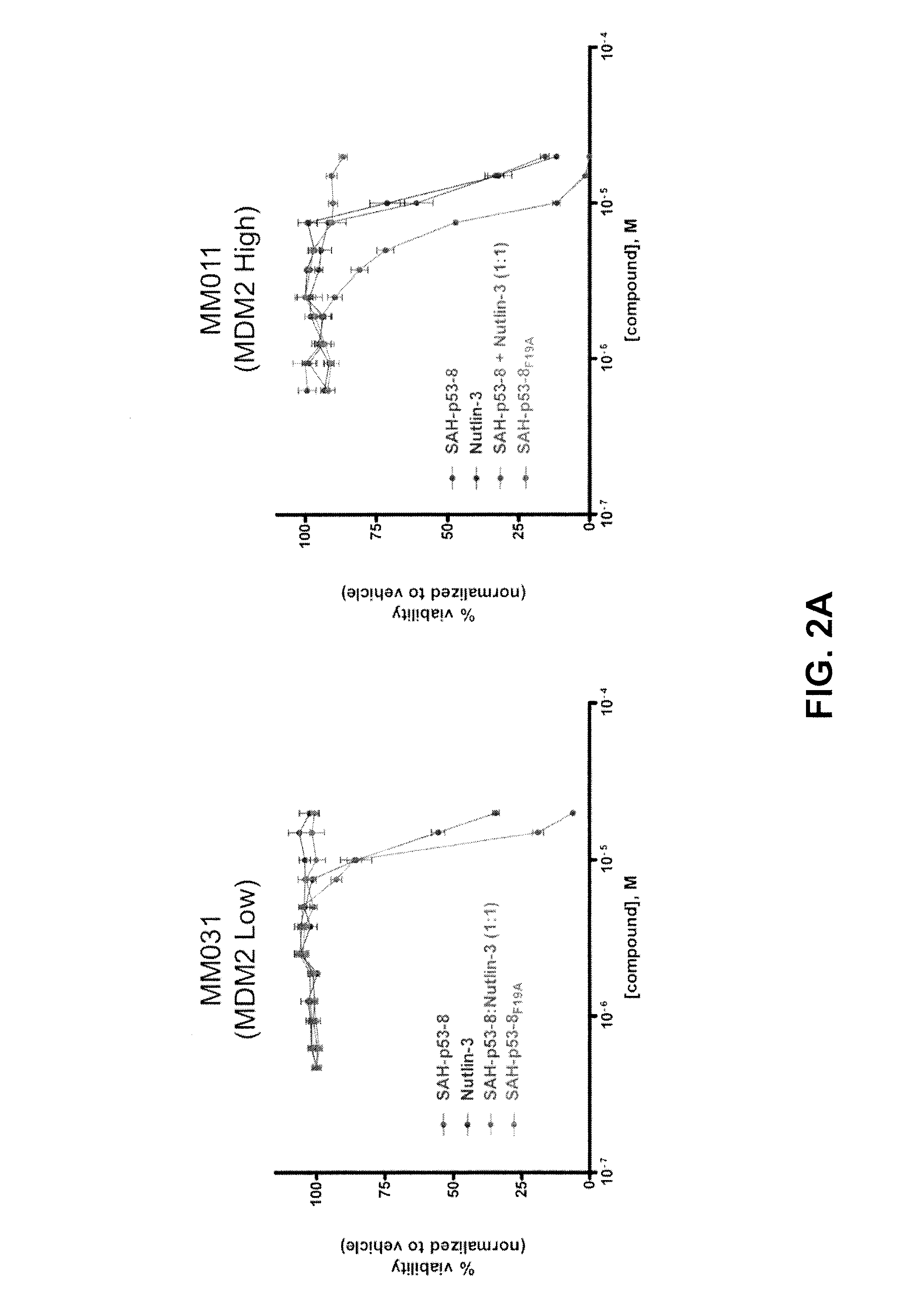Combinations of therapeutic agents for treating melanoma
a technology for melanoma and therapeutic agents, applied in the direction of drug compositions, peptide/protein ingredients, instruments, etc., can solve the problems of chemo- and radio-resistant, skin cancer-related death leading cause of cutaneous malignant melanoma
- Summary
- Abstract
- Description
- Claims
- Application Information
AI Technical Summary
Benefits of technology
Problems solved by technology
Method used
Image
Examples
example 1
MDM4 is Over Expressed in 60% of Human Melanomas
[0099]In most human melanoma cell lines p53 is wild-type and highly expressed, but transcriptionally inactive.26 Since MDM4 overexpression stabilizes p53 by competing with MDM2 for p53 binding and inhibits p53 transcriptional activity24 we hypothesized that MDM4 overexpression might contribute to inactivation of p53 in melanomas. Although we have previously found MDM4 amplification in retinoblastoma and breast cancer27, 28 we did not find evidence for an increased somatic copy-number of MDM4 in melanomas through in silico analysis.29, 30 Meta-analysis of Oncomine microarray data (Oncomine 4.4 Research Edition; www.oncomine.org) failed to identify any significant or recurrent up-regulation of MDM4 mRNA expression in melanomas. We nevertheless assessed MDM4 levels in a panel of 40 primary skin melanomas: ten primary, non-invasive, ten regional dermal metastases, ten nodal metastatic lesions and ten distant metastatic lesions. Consistent ...
example 2
Inhibition of the MDM4-p53 Interaction Restores p53 Activity in Melanoma
[0104]The reliance of melanoma on MDM4 for survival suggests that antagonizing its interaction with wild-type p53 should restore p53-driven pro-apoptotic activities in melanoma cells. Recently, Bernal and co-workers described the design, synthesis and evaluation of stabilized alpha helical peptides (SAH) based on the transactivation domain of p53.39 One of these compounds, SAH-p53-8, binds directly MDM4 within its p53-binding pocket with high affinity and is capable of disrupting p53-MDM4 complexes in vitro and in vivo.40 In contrast to nutlin-3, this compound is capable of reactivating the p53 tumor suppressor functions and induce apoptosis in cells with high levels of wild-type p53 and MDM4.40 To test whether direct inhibition of MDM4 is a viable therapeutic strategy for melanoma we treated the MM cell lines with SAH-p58-8, its biologically inactive point mutant analog SAH-p53-8F19A, the MDM2-specific inhibito...
example 3
Targeting the MDM4-p53 Pathway Sensitizes Melanoma to Conventional Chemotherapy
[0107]The use of DNA-damaging agents such as cisplatin or melphalan in the clinic has yielded low response rates in melanoma, of which few are durable.41 Strategies that increase the sensitivity of melanoma cells to genotoxic agents are expected to decrease their toxicity and eventually improve their potency. Since the effectiveness of these agents relies on the reactivation of a genetically uncompromised p53 pathway, we hypothesized that combination treatment with p53-MDM4 inhibitors would enhance cytotoxicity caused by DNA-damaging agents. To test this possibility, we investigated the effects of cisplatin and melphalan alone or in combination with nutlin-3 or SAH-p53-8 on the growth of the MM011 and MM031 cell lines. Treatment of these cells with cisplatin or melphalan alone yielded variable growth inhibition effects (FIGS. 3A and 3B). Importantly, the cytotoxic effects of these alkylating agents were g...
PUM
| Property | Measurement | Unit |
|---|---|---|
| volume | aaaaa | aaaaa |
| volume | aaaaa | aaaaa |
| pH | aaaaa | aaaaa |
Abstract
Description
Claims
Application Information
 Login to View More
Login to View More - R&D
- Intellectual Property
- Life Sciences
- Materials
- Tech Scout
- Unparalleled Data Quality
- Higher Quality Content
- 60% Fewer Hallucinations
Browse by: Latest US Patents, China's latest patents, Technical Efficacy Thesaurus, Application Domain, Technology Topic, Popular Technical Reports.
© 2025 PatSnap. All rights reserved.Legal|Privacy policy|Modern Slavery Act Transparency Statement|Sitemap|About US| Contact US: help@patsnap.com



